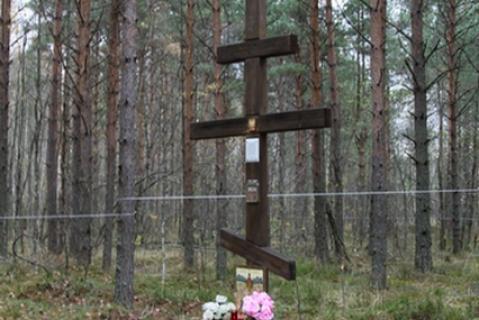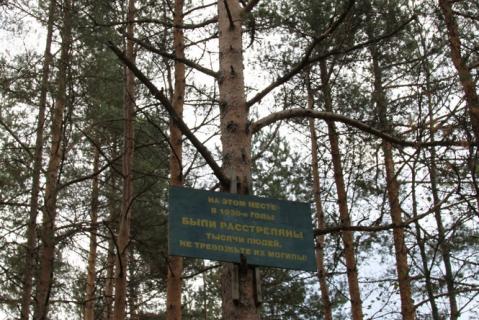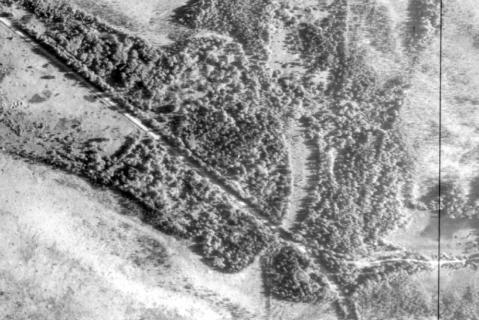The Koirankangas landmark on the Rzhevk artillery firing range was the main location for the execution and burial of those shot in the Leningrad Region from the late 1920s to the 1930s on the orders of the NKVD and its predecessors. Local witnesses testify to the events, including those who inhabited the former Finnish villages in its vicinity.
In 2002 an exploratory group from St Petersburg Memorial found one of the burials. More than 50 pits containing the remains of those shot were discovered, with bodies laid in 2-3 layers to a depth of 2.5 metres, in a square kilometre of woodland in the northern part of the firing range. Further investigation was prohibited by the firing range administration in 2003.
In 2008 a memorial cross was erected over the burials. The inscription on the nameboard reads: “Here at Koirankangas in the 1920s and 1930s many thousands of our compatriots were shot by Stalin’s butchers. To their radiant memory”. Two years later the range administration agreed to permit annual Services for the Dead to be held at the cross.
(For earlier use of another part of the firing range for executions, see Kovalyovsky Woods [47-01].)
No Book of Remembrance was published for the Leningrad Region. Information about those shot in the area is included in the 19-volume Leningrad Martyrology and St Petersburg Memmorial’s archive.
The Memorial database (2025) lists 53,831 victims in the Leningrad Region. See Levashovo.
47,379 were shot, almost all during the Great Terror (47,142). Charges against 391 other individuals were dropped; 32 of them died in custody. The executions include many of those first sent to the camps or deported to special settlements. 6,000 had earlier been sentenced to 5-10 years in the camps: 2,495 of them were shot. Of those previously deported from the Region with their families (1,648), no less than 1,066 were shot. Another 401 died in captivity, many of them already sentenced to death (242).
| Date | Nature of ceremonies | Organiser or responsible person | Participants | Frequency |
|---|---|---|---|---|
|
October
|
Commemorative masses
|
Orthodox congregations
|
Priests, public
|
Annual event since 2010
|
| State of burials | Area | Boundaries |
|---|---|---|
|
Subsidence over the burials
|
not determined
|
not delineated
|
[ original texts and hyperlinks ]
“About Koirankangas”, Cogita!ru, 4 November 2010 [retrieved, 28 May 2022; no longer accessible, August 2025]
“The site of executions and burials at the Rzhevsk firing range (Koirankangas)”, Virtual Museum of the Gulag [retrieved, 28 May 2022; no longer accessible, August 2025]



